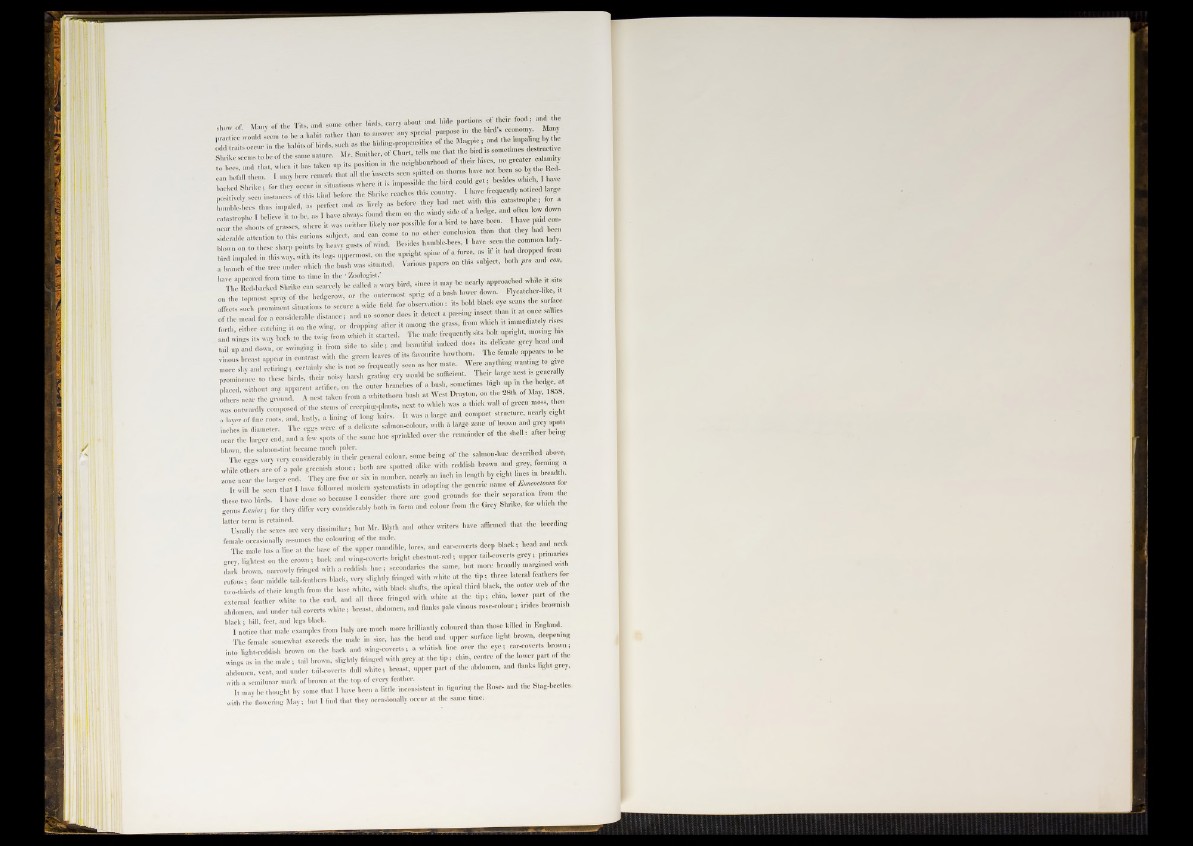
S h rik e se em sto h eo f the saiMnatme. M r.Sm ith e r. o f Oh ^ their hives, no greater calamity
MB— 1 8— 1 situations where it is impossihie the bird could g e t; besides winch I have
homble-bees t ins impae as p H on ,he windy side of a hedge, and often low down
B W W B W a H B ■ ■ I >. ■ R f l f l B
d wimrs its wav back to the twig from which it started. The male frequently s.ts bolt upright, moving his
and wings it .y ^ ^ ^ side ; and beautiful ;ndeed does ite delicate grey head and
M breast appear in contrast with the green leaves of its favourite hawthorn. The female appears to he
r a w H m n a
L T o u L r d l y composed of the stems of creeping-plants, next to which was a thick wall of green moss, then
a layer of fine roots, and, lastly, a lining of long hairs. I t was a large and compact structure, nearly eight
H H | The euns were of a delicate salmon-colour, with a large zone of brown and grey spots
: ^ I h : “ „ d, a n d a fevv spots of the same hue sprinkled over the remainder of the shell: after being
W The eggs vary*very emudderahly^iii*their general colour, some being of the salmon-line described above,
while others are of Zpa le greenish stone ; both are spotted alike with reddish brown and grey, f o rm in g |
zone near the larger end. They are five or six in number, nearly an inch in length by eight lines in breadth.
I t will be seen that I have followed modern systematists in adopting the generic name
these two birds. I have done so because I consider there are good grounds for their separation from Eg
genus Lamus; for they differ very considerably both in form and colour from the Grey Shrike, for which
' " t l V ™ very dissimilar; h u t Mr. Blyth and other writers have affirmed that the breeding
female occasionally assumes the colouring of the male.
The male has a line at the base of the upper mandible, lores, and ear-eoverts deep black; head and neck
grey, lightest on the crown ; back and wing-coverts bright ehestnut-red; upper tail-coverts g rey ; primaries
dark brown, narrowly fringed with a reddish h u e ; secondaries the same, but more broadly margined with
rufous; four middle tail-feathers black, very slightly fringed with white a t the tip ; th re e la te ra l feathers for
two-thirds of their length from the base white, with black shafts, the apical third black, the outer web of he
external feather white to the end, and all three fringed with white a t the tip ; chin, lower part the
abdomen, and under tail coverts white; breast, abdomen, and Hanks pale vinous rose-colour; .rides brownish
black: bill, feet, and legs black. . ,
I notice that male examples from Italy are much more brilliantly coloured than those killed § England.
The female somewhat exceeds the male in sixe, has the head and upper surface hgh, brown, deepening
into light-reddish brown on the back and wing-eoverts; a whitish line over the
wings as in the male; tail brown, slightly fringed with grey a t the t ip ; ehin, centre of the lower p art of the
a b d L c n , vent, and under tail-coverts dull white; breast, upper part of the abdomen, and flanks light grey,
with a semilunar mark of brown a t the top of every feather.
It may be thought by some that I have been a little inconsistent in figuring the Rose- and the Stag-beetles
with the flowering May; but I find that they occasionally occur at the same time;